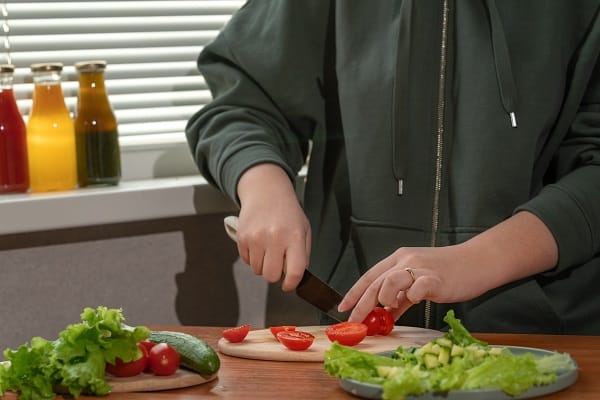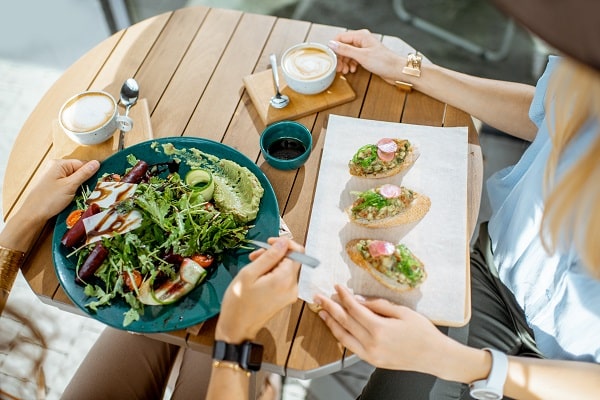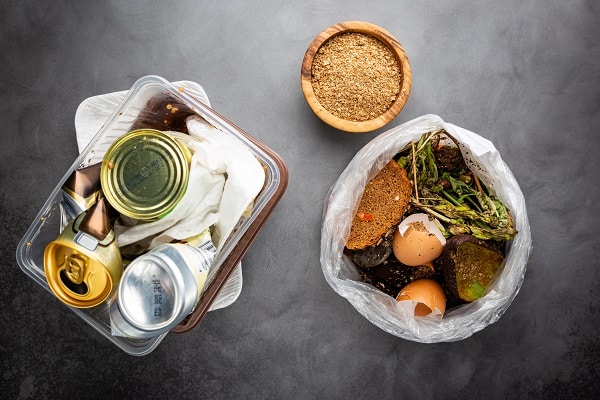Portion control is a fundamental component of balanced eating and maintaining a healthy lifestyle. It’s not just about limiting what you eat, but more about eating the right amounts of the right foods. With a little planning and mindful choices, mastering portion control can be a straightforward and even empowering process. This blog post will explore what portion control entails, and its benefits, and offer practical tips to help you incorporate it into your daily routine.
What Is Portion Control?

Portion control is the practice of moderating the amount of food you consume in a single sitting. It’s about understanding how much your body needs to function optimally, and adjusting your intake accordingly. This isn’t to be confused with dieting, which often involves temporary and sometimes drastic changes to what and how much you eat. Portion control, on the other hand, is more about making a sustainable change to your eating habits.
In essence, portion control isn’t about deprivation or drastic measures. Instead, it encourages a balance in the diet by ensuring you consume an adequate amount of food from all the necessary food groups. By doing so, you can enjoy the foods you love, while maintaining your health and nutritional balance.
Benefits of Portion Control
The mastery of portion control extends beyond the plate and has numerous benefits that touch various aspects of overall health. Let’s delve into some of the significant advantages.
Weight Management

The practice of portion control plays a crucial role in maintaining a healthy weight. It’s all about calorie balance. If you consume more calories than your body needs for its daily functions, the extra calories get stored as fat leading to weight gain. Conversely, if you burn more calories than you consume, you lose weight. Portion control helps keep this balance in check, aiding in both weight loss and maintenance.
Moreover, by controlling portions, you prevent overeating—a common cause of weight gain. This strategy makes it easier to create a calorie deficit, if necessary, without feeling deprived. In doing so, you’re not only promoting weight management but also fostering a healthier relationship with food.
Reduces Overeating

Portion control is a powerful tool in combatting overeating. By being mindful of the quantity of food you consume, you can better avoid eating beyond your body’s requirements. Overeating not only leads to weight gain but also places unnecessary stress on your digestive system, leading to discomfort and other health issues.
When you serve yourself larger portions, you tend to eat more without realizing it. This “portion distortion” can create a cycle where you habitually consume more than you need. However, mastering portion control can help break this cycle, ensuring you eat what your body require, not just what your eyes perceive as an appropriate amount.
Enhances Nutrient Intake

Portion control can significantly improve the balance and variety in your diet. When you pay attention to the portion sizes of different food groups, you ensure that you’re getting a healthy mix of carbohydrates, proteins, and fats, as well as essential vitamins and minerals.
This approach isn’t just about limiting certain foods; it’s about making room for a greater variety of nutrients. For example, by reducing the portion size of your pasta dish, you may have room to add a colorful salad, increasing your intake of fiber, vitamins, and antioxidants. Thus, portion control can make your meals more balanced and nutritionally rich.
Prevents Waste

There’s another benefit of portion control that goes beyond personal health—it’s also good for the planet. By serving and eating appropriate portions, you can significantly reduce the amount of food waste you generate. This not only saves resources but also has a positive impact on your environment.
According to the Food and Agriculture Organization of the United Nations, approximately one-third of the food produced in the world for human consumption every year gets lost or wasted. By simply being more aware of your portions, you can play a part in reducing this waste. It’s a win-win situation—for your health and for the health of your planet.
Tips For Mastering Portion Control
Now that you understand the benefits of portion control, let’s explore some practical tips for making balanced eating more intuitive.
Use Smaller Plates And Bowls

The size of your plates and bowls can significantly affect your perception of portion sizes. Studies have shown that people tend to eat less when they use smaller plates, as it makes a serving look larger. This psychological trick, known as the Delboeuf illusion, can be an effective tool in your portion control arsenal.
So, try downsizing your plates, bowls, and glasses. You might find that you’re just as satisfied with your meal even though you’ve eaten less. This small change can lead to a significant reduction in calorie intake over time, aiding in weight management without feeling deprived.
Understand Serving Sizes

A serving size is a standardized measure of food, such as a cup or ounce. Understanding serving sizes can help you make healthier choices and practice better portion control. However, it’s important to remember that a “serving” is not necessarily the same as a “portion,” which is the amount of food you choose to eat at a time.
Consider learning to measure serving sizes, particularly for foods that are easy to over-consume like pasta, rice, and cereals. For example, a serving of cooked pasta is typically about one-half cup, but many people routinely eat more than this in a meal. By becoming aware of serving sizes, you can balance your meals better and make more informed decisions about your food.
Listen To Your Hunger Cues

Mindful eating is all about paying attention to your body’s natural hunger and satiety signals. It involves eating slowly, savoring each bite, and learning to recognize when you’re truly hungry and when you’ve had enough. This can be an extremely effective approach to portion control.
Often, you eat for reasons other than hunger, such as boredom, stress, or just because food is available. By tuning into your body’s signals, you can distinguish between physical hunger and emotional eating, helping you to avoid unnecessary snacking and overeating.
Pre-portion Snacks

Pre-portioning your snacks is another useful strategy for controlling your intake. Instead of eating straight from the bag or box, portion out your snack into a bowl or a small plate. This prevents mindless eating and allows you to be aware of how much you are consuming.
Consider preparing your snacks ahead of time in individual portions. This not only saves time but also makes it easier to grab a healthy snack when you’re hungry. Try portioning out nuts, fruits, or whole-grain crackers – these options are not only nutritious but also satisfying.
Master Portion Control Today!
In conclusion, mastering portion control can be a game-changer when it comes to balanced eating and maintaining a healthy lifestyle. It’s not about depriving yourself of the foods you enjoy but rather learning to consume them in amounts that support your health and well-being. By understanding what portion control is, recognizing its benefits, and implementing practical strategies like using smaller plates, understanding serving sizes, listening to your hunger cues, and pre-portioning snacks, you can foster a healthier relationship with food. Remember, portion control is a skill that gets easier with practice. Start small, and you’ll soon notice the positive impacts on your health.


